Planning worship?
Check out our sister site, ZeteoSearch.org,
for 20+ additional resources related to your search.
- |
User Links
Person Results
‹ Return to hymnal
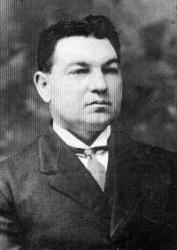
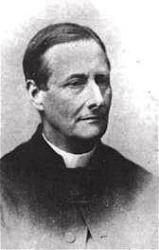
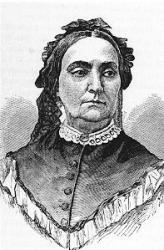
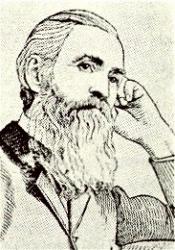

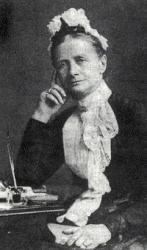
Export as CSV
James Rowe

1865 - 1933 Hymnal Number: d2 Author of "I shall meet Jesus" in Carols of Peace for Christian Work and Worship Pseudonym: James S. Apple.
James Rowe was born in England in 1865. He served four years in the Government Survey Office, Dublin Ireland as a young man. He came to America in 1890 where he worked for ten years for the New York Central & Hudson R.R. Co., then served for twelve years as superintendent of the Mohawk and Hudson River Humane Society. He began writing songs and hymns about 1896 and was a prolific writer of gospel verse with more than 9,000 published hymns, poems, recitations, and other works.
Dianne Shapiro, from "The Singers and Their Songs: sketches of living gospel hymn writers" by Charles Hutchinson Gabriel (Chicago: The Rodeheaver Company, 1916)
James Rowe
Richard H. Robinson
1842 - 1892 Person Name: R. H. Robinson Hymnal Number: d34 Author of "Holy Father, cheer our way" in Carols of Peace for Christian Work and Worship Mr. Robinson was born in London, became incumbent of the Octagon Chapel, Bath, and in 1884 of St. German's, Blackheath. He wrote Sermons on Faith and Duty, The Creed and the Age.
The Methodist Hymn-Book Illustrated
========================
Robinson, Richard Hayes, was born in 1842, and educated at King's College, London. Taking Holy Orders in 1866, he became curate of St. Paul's, Penge. He subsequently held various charges, including the Octagon Chapel, Bath. He became Incumbent of St. Germans, Blackheath, in 1884. His prose works include Sermons on Faith and Duty, 2nd ed., 1873, and The Creed and the Age, 1884. His hymn "Holy Father, cheer our way " (Evening), was contributed to the Society for Promoting Christian Knowledge Church Hymns, 1871. It was written in 1869 for the congregation of St. Paul's, Upper Norwood, and was designed to be sung after the 3rd Collect at Evening Prayer. It has passed into several collections (sometimes in an altered form), including Hymns Ancient & Modern., 1875, and Thring's Collection, 1882. See the latter for the authorized text. He died Nov. 5, 1892.
--John Julian, Dictionary of Hymnology (1907)
Richard H. Robinson
S. Baring-Gould

1834 - 1924 Person Name: Sabine Baring-Gould Hymnal Number: d84 Author of "Now the day is over, Night is drawing nigh" in Carols of Peace for Christian Work and Worship Baring-Gould, Sabine, M.A., eldest son of Mr. Edward Baring-Gould, of Lew Trenchard, Devon, b. at Exeter, Jan. 28, 1834, and educated at Clare College, Cambridge, B.A. 1857, M.A. 1860. Taking Holy Orders in 1864, he held the curacy of Horbury, near Wakefield, until 1867, when he was preferred to the incumbency of Dalton, Yorks. In 1871 he became rector of East Mersea, Essex, and in 1881 rector of Lew Trenchard, Devon. His works are numerous, the most important of which are, Lives of the Saints, 15 vols., 1872-77; Curious Myths of the Middle Ages, 2 series, 1866-68; The Origin and Development of Religious Belief, 2 vols., 1869-1870; and various volumes of sermons. His hymns, original and translated, appeared in the Church Times; Hymns Ancient & Modern, 1868 and 1875; The People's Hymnal, 1867, and other collections, the most popular being "Onward, Christian soldiers," "Daily, daily sing the praises," the translation "Through the night of doubt and sorrow," and the exquisite Easter hymn, "On the Resurrection Morning."
His latest effort in hymnology is the publication of original Church Songs, 1884, of which two series have been already issued. In the Sacristy for Nov. 1871, he also contributed nine carols to an article on "The Noels and Carols of French Flanders.” These have been partially transferred to Chope's and Staniforth's Carol Books, and also to his Church Songs.
--John Julian, Dictionary of Hymnology (1907)
==================
Baring-Gould, S., p. 114, i. Other hymns in common use are:—
1. Forward! said the Prophet. Processional. Appeared in the New Mitre Hymnal, 1874.
2. My Lord, in glory reigning. Christ in Glory. In Mrs. Brock's Children's Hymn Book, 1881.
3. Now severed is Jordan. Processional. Appeared in the S. Mary, Aberdeen, Hymnal, 1866, the People's Hymnal, 1867, &c.
--John Julian, Dictionary of Hymnology, Appendix, Part II (1907)
S. Baring-Gould
Lydia Baxter

1809 - 1874 Hymnal Number: d119 Author of "O depth of mercy can it [there] be" in Carols of Peace for Christian Work and Worship Baxter, Lydia, an American Baptist, was b. at Petersburg, N. York, Sep. 2, 1800, married to Mr. Baxter, and d. in N. Y. June 22, 1874. In addition to her Gems by the Wayside, 1855, Mrs. Baxter contributed many hymns to collections for Sunday Schools, and Evangelistic Services. Of these, the following are the best known:—
1. Cast thy net again, my brother. Patient toil. Given in the Royal Diadem, N. Y., 1873.
2. Go, work in my vineyard. Duty. Also given in the Royal Diadem, 1873, and Mr. Sankey's S. & Solos, No. 4.
3. I'm kneeling, Lord, at mercy's gate. Lent. In Coronation Hymns, &c, N. Y., 1879.
4. I'm weary, I'm fainting, my day's work is done. Longing for rest. Royal Diadem. 1873.
5. In the fadeless spring-time. Heavenly Reunion. In the Royal Diadem, 1873, I. D. Sankey's S. S. & Solos, No. 256, and others. It was written for Mr. H. P. Main in 1872.
6. One by one we cross the river. Death. In Songs of Salvation, N. Y., 1870, I. D. Sankey's S. S. & Solos, No. 357, &c. It dates cir. 1866.
7. Take the name of Jesus with you. Name of Jesus. Written late in 1870, or early in 1871, for W. H. Doane, and pub. in Pure Gold, 1871. It is No. 148 of I. D. Sankey's S. S. & Solos.
8. The Master is coming. Invitation. In Songs of Salvation, 1870, No. 38.
9. There is a gate that stands ajar. Mercy. In New Hallowed Songs, and also the Gospel Songs of P. Bliss, 1874. It was written for S. J. Vail about 1872. It has attained to some popularity. It is given in Mr. Sankey's S. & Solos, No. 2.
-John Julian, Dictionary of Hymnology (1907)
Lydia Baxter
Sanford Fillmore Bennett

1836 - 1898 Person Name: Sanford F. Bennett Hymnal Number: d124 Author of "Sweet by and by" in Carols of Peace for Christian Work and Worship Sanford Fillmore Bennett was born in Eden, New York, 21 June 1836. He and his parents moved to Plainfield, Illinois when he was two years old. He worked on the farm and attended district school during the winter. He was a voracious reader. At sixteen he entered Waukegon Academy. Two years later he began teaching at Wauconda. In 1858 he entered the University of Michigan, Afterward he had charge of the schools in Richmond, Illinois. Two years later he resigned and became Associate Editor of the Independent at Elkhorn, Wisconsin. In 1864 he enlisted in the Wisconsin Volunteers and served as Second Lieutenant. After the war he returned to Elkhorn and opened a drug store and began the study of medicine. He graduated from Rush Medical College in 1874.
Dianne Shapiro, from "The Singers and Their Songs: sketches of living gospel hymn writers" by Charles Hutchinson Gabriel (Chicago: The Rodeheaver Company, 1916)
Sanford Fillmore Bennett
Emmett S. Dean
1876 - 1951 Editor of "" in Carols of Peace for Christian Work and Worship Born: June 29, 1876, Conecuh County, Alabama.
Died: October 8, 1951, Waco, Texas.
Buried: Oakwood Cemetery, Waco, Texas.
A Methodist, Dean taught singing schools for 40 years, wrote some 500 songs, and for four years headed the Trio Music Company. With Franklin Eiland and Homer Elliott, he founded the Southern Development Normal Music School in Waco, Texas.
--www.hymntime.com/tch/
Emmett S. Dean
J. E. Thomas
1860 - 1946 Person Name: J. Edmond Thomas Hymnal Number: d62 Author of "Hallelujah, we shall rise" in Carols of Peace for Christian Work and Worship J. Edmond Thomas Born: December 6, 1860, Calhoun County, Arkansas. Died: April 30, 1946, Fort Worth, Texas. Buried: Greenwood Cemetery, Fort Worth, Texas. Note: Some sources give his first name as John; his tombstone says James. Thomas was the husband of Courtney Lee Wigley and Pearl Hatchett (married 1923) In 1874, his family moved from their farm in Texas to Arkansas. His father died later that year.
As the oldest son, he had his hands full supporting the family, but he managed to begin attending a vocal school at age 17, under Professor T. A. Bridges. He later studied under Horatio Palmer and George A. Goodrich.
He began a full time music career in 1890, and with Franklin Eiland and John M. Greer, and helped found the Trio Music Company in Waco, Texas, in 1892. He went on to establish the Quartet Music Company in Fort Worth, Texas.
A teacher, composer, music compiler, and publisher for over 44 years.
© The Cyber Hymnal™ (www.hymntime.com/tch)
J. E. Thomas
Sarah Flower Adams

1805 - 1848 Person Name: Sarah F. Adams Hymnal Number: d82 Author of "Nearer to thee" in Carols of Peace for Christian Work and Worship Adams, Sarah, nee Flower. born at Harlow, Essex, Feb. 22nd, 1805; died in London, Aug. 14, 1848, and was buried at Harlow, Aug. 21,1848. She was the younger daughter of Mr. Benjamin Flower, editor and proprietor, of The Cambridge Intelligencer; and was married, in 1834, to William B. Adams, a civil engineer. In 1841 she published Vivia Perpetua, a dramatic poem dealing with the conflict of heathenism and Christianity, in which Vivia Perpetua suffered martyrdom; and in 1845, The Flock at the Fountain; a catechism and hymns for children. As a member of the congregation of the Rev. W. J. Fox, an Unitarian minister in London, she contributed 13 hymns to the Hymns and Anthems, published by C. Fox, Lond., in 1841, for use in his chapel. Of these hymns the most widely known are— "Nearer,my God,to Thee," and "He sendeth sun, He sendeth shower." The remaining eleven, most of which have come into common use, more especially in America, are:—
Creator Spirit! Thou the first. Holy Spirit.
Darkness shrouded Calvary. Good Friday.
Gently fall the dews of eve. Evening.
Go, and watch the Autumn leaves. Autumn.
O hallowed memories of the past. Memories.
O human heart! thou hast a song. Praise.
O I would sing a song of praise. Praise.
O Love! thou makest all things even. Love.
Part in Peace! is day before us? Close of Service.
Sing to the Lord! for His mercies are sure. Praise.
The mourners came at break of day. Easter.
Mrs. Adams also contributed to Novello's musical edition of Songs for the Months, n. d. Nearly all of the above hymns are found in the Unitarian collections of Great Britain, and America. In Martineau's Hymns of Praise & Prayer, 1873, No. 389, there is a rendering by her from Fenelon: —" Living or dying, Lord, I would be Thine." It appeared in the Hymns and Anthems, 1841.
-John Julian, Dictionary of Hymnology (1907)
Sarah Flower Adams
George Keith
1638 - 1716 Hymnal Number: d40 Author of "How firm a foundation, ye [you] saints of the Lord" in Carols of Peace for Christian Work and Worship George Keith, according to D. Sedgwick, was the author of "How firm a foundation, ye saints of the Lord." Little is known about Keith, save that he was a publisher, a son-in-law of Dr. Gill, and the composer of several hymns.
--Annotations of the Hymnal, Charles Hutchins, M.A. 1872.
George Keith
Cecil Frances Alexander

1818 - 1895 Person Name: Cecil F. Alexander Hymnal Number: d67 Author of "Jesus calls us, o'er the tumult" in Carols of Peace for Christian Work and Worship As a small girl, Cecil Frances Humphries (b. Redcross, County Wicklow, Ireland, 1818; Londonderry, Ireland, 1895) wrote poetry in her school's journal. In 1850 she married Rev. William Alexander, who later became the Anglican primate (chief bishop) of Ireland. She showed her concern for disadvantaged people by traveling many miles each day to visit the sick and the poor, providing food, warm clothes, and medical supplies. She and her sister also founded a school for the deaf. Alexander was strongly influenced by the Oxford Movement and by John Keble's Christian Year. Her first book of poetry, Verses for Seasons, was a "Christian Year" for children. She wrote hymns based on the Apostles' Creed, baptism, the Lord's Supper, the Ten Commandments, and prayer, writing in simple language for children. Her more than four hundred hymn texts were published in Verses from the Holy Scripture (1846), Hymns for Little Children (1848), and Hymns Descriptive and Devotional ( 1858).
Bert Polman
==================
Alexander, Cecil Frances, née Humphreys, second daughter of the late Major John Humphreys, Miltown House, co. Tyrone, Ireland, b. 1823, and married in 1850 to the Rt. Rev. W. Alexander, D.D., Bishop of Derry and Raphoe. Mrs. Alexander's hymns and poems number nearly 400. They are mostly for children, and were published in her Verses for Holy Seasons, with Preface by Dr. Hook, 1846; Poems on Subjects in the Old Testament, pt. i. 1854, pt. ii. 1857; Narrative Hymns for Village Schools, 1853; Hymns for Little Children, 1848; Hymns Descriptive and Devotional, 1858; The Legend of the Golden Prayers 1859; Moral Songs, N.B.; The Lord of the Forest and his Vassals, an Allegory, &c.; or contributed to the Lyra Anglicana, the S.P.C.K. Psalms and Hymns, Hymns Ancient & Modern, and other collections. Some of the narrative hymns are rather heavy, and not a few of the descriptive are dull, but a large number remain which have won their way to the hearts of the young, and found a home there. Such hymns as "In Nazareth in olden time," "All things bright and beautiful," "Once in Royal David's city," "There is a green hill far away," "Jesus calls us o'er the tumult," "The roseate hues of early dawn," and others that might be named, are deservedly popular and are in most extensive use. Mrs. Alexander has also written hymns of a more elaborate character; but it is as a writer for children that she has excelled.
- John Julian, Dictionary of Hymnology (1907)
===============
Alexander, Cecil F., née Humphreys, p. 38, ii. Additional hymns to those already noted in this Dictionary are in common use:—
1. Christ has ascended up again. (1853.) Ascension.
2. His are the thousand sparkling rills. (1875.) Seven Words on the Cross (Fifth Word).
3. How good is the Almighty God. (1S48.) God, the Father.
4. In [a] the rich man's garden. (1853.) Easter Eve.
5. It was early in the morning. (1853.) Easter Day.
6. So be it, Lord; the prayers are prayed. (1848.) Trust in God.
7. Saw you never in the twilight? (1853.) Epiphany.
8. Still bright and blue doth Jordan flow. (1853.) Baptism of Our Lord.
9. The angels stand around Thy throne. (1848.) Submission to the Will of God.
10. The saints of God are holy men. (1848.) Communion of Saints.
11. There is one Way and only one. (1875.) SS. Philip and James.
12. Up in heaven, up in heaven. (1848.) Ascension.
13. We are little Christian children. (1848.) Holy Trinity.
14. We were washed in holy water. (1848.) Holy Baptism.
15. When of old the Jewish mothers. (1853.) Christ's Invitation to Children.
16. Within the Churchyard side by side. (1848.) Burial.
Of the above hymns those dated 1848 are from Mrs. Alexander's Hymns for Little Children; those dated 1853, from Narrative Hymns, and those dated 1875 from the 1875 edition of Hymns Ancient & Modern.
Several new hymns by Mrs. Alexander are included in the 1891 Draft Appendix to the Irish Church Hymnal.
--John Julian, Dictionary of Hymnology, Appendix, Part II (1907)
=============
Alexander, Cecil F. , p. 38, ii. Mrs. Alexander died at Londonderry, Oct. 12, 1895. A number of her later hymns are in her Poems, 1896, which were edited by Archbishop Alexander.
--John Julian, Dictionary of Hymnology, New Supplement (1907)
See also in:Hymn Writers of the Church
Cecil Frances Alexander


 My Starred Hymns
My Starred Hymns

